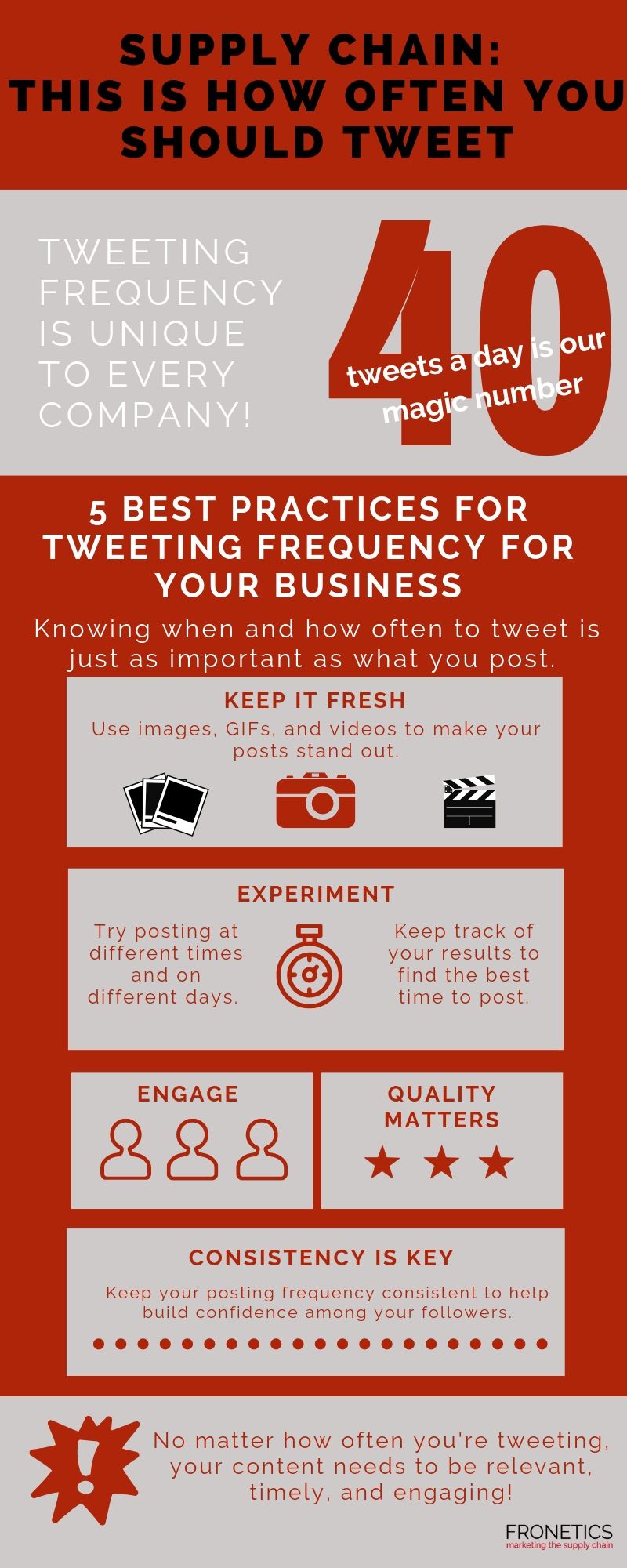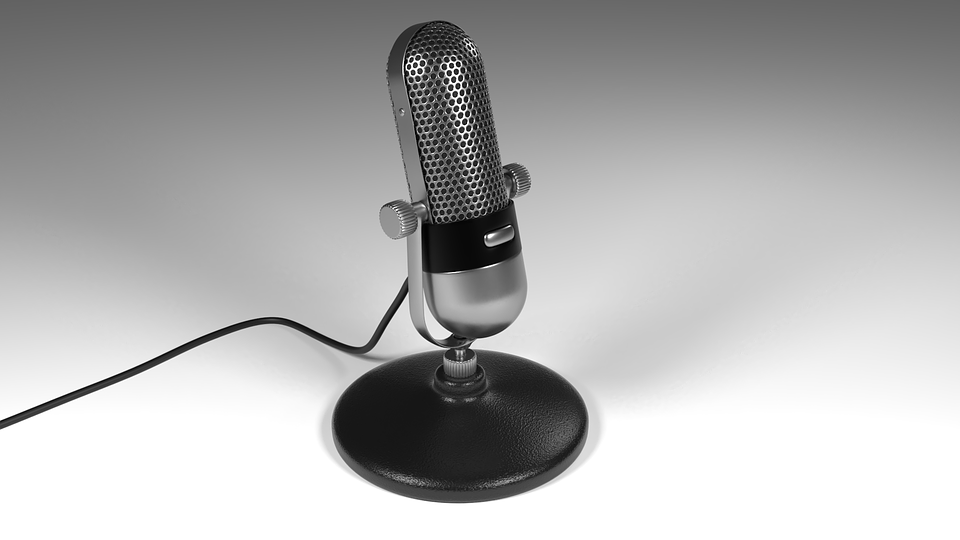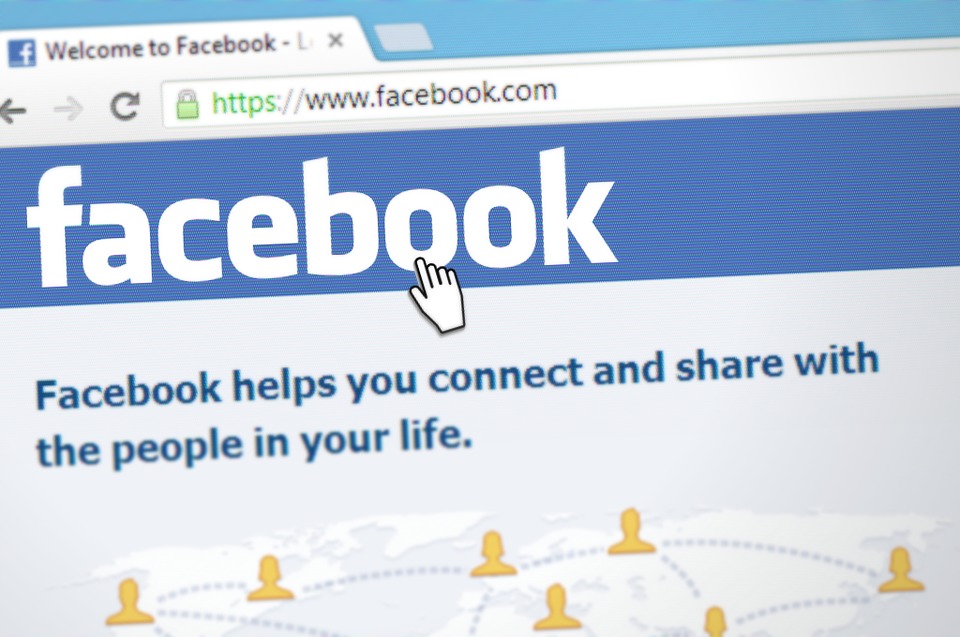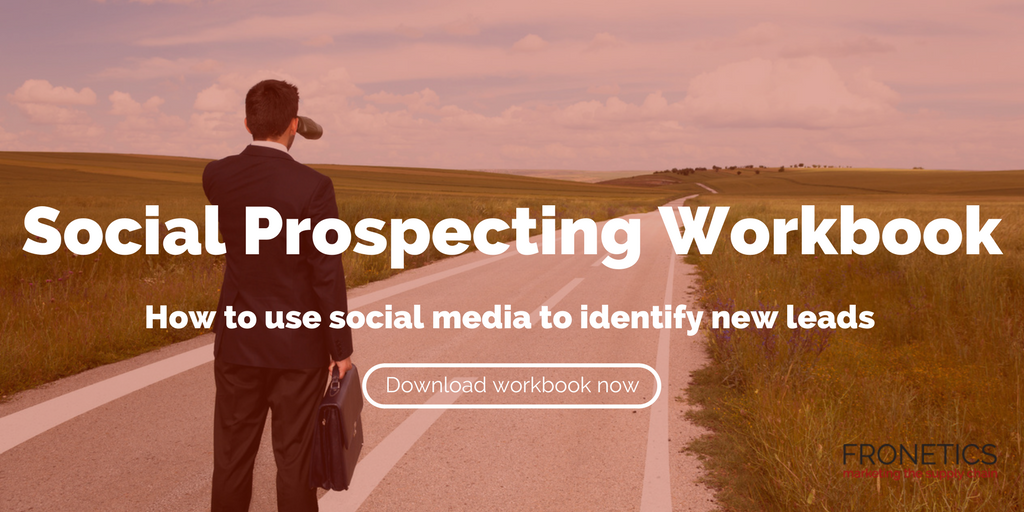
by Fronetics | Jul 10, 2019 | Blog, Content Marketing, Current Events, Marketing, Social Media
Knowing when and how often to tweet is just as important what you post. Here’s how often your business should be tweeting.
Highlights:
- Be consistent with your tweeting frequency, while keeping content fresh.
- To determine how often to tweet for your business, experiment with different posting frequencies, and use analytics tools to track your results.
- As with any digital marketing endeavor, quality is more important than quantity.
It’s a perennial question we get from our clients: how often should business be posting on social media? The answer varies widely from platform to platform, and the answer for how often to tweet has proved a controversial one.
Back in 2016, in response to a Socialbakers study that suggested that posting to Twitter three times a day is an ideal frequency for brands, Fronetics conducted a study of our own. We determined that for our business, tweeting around 40 times a day is optimal.
What these radically divergent results demonstrate is that the answer to how often to tweet is not a simple one. While the bottom line is that optimal tweeting frequency is unique to every brand, there are 5 best practices your business should be aware of.
5 best practices concerning how often to tweet for your business

(Made with Canva)
1) Consistency is key
Whether you’re tweeting once a day, or a hundred, being consistent about posting frequency will serve you best. Keeping your posting frequency relatively consistent lets your followers gain confidence that you will set and expectation and meet it. As social media algorithms become less friendly to businesses, it’s all the more important that you bring your followers to you.
2) Keep it fresh
It’s important to point out that consistency is key only when it comes to how often to tweet – not the content you’re publishing. Particularly on Twitter, varying your content is the best way to keep your audience engaged. Use images, GIFs, and videos to make your posts stand out, or ask questions to promote conversation and engage your followers.
3) Experiment
When it comes to how often to tweet for your business, you’ll find all kinds of divergent ready-made answers. But the truth is, there’s no magic number. Your business or your marketing partner needs to determine what works for your unique brand and audience. The best way to do this is to experiment with posting at different times and keep track of your results. In addition to Twitter’s internal analytics, these five tools can help you track and evaluate the results of your experiment.
4) Engage
As with any social media platform, publishing content shouldn’t be your only focus. Engaging with your followers, from comments to retweets, is crucial for generating an active and loyal audience.
In addition, using social media to interact with your audience can help inform your decisions about how often to tweet. When are your followers most active? What kind of content do they want to see from you? Having a conversation with your followers is one of the best ways you can answer this question.
5) Quality matters
There’s no amount of posting frequency that makes up for posting poor quality content. If your content is bad, you’d likely be better off not posting at all. Publishing content that doesn’t interest your audience will lose you followers and leads. No matter how often you’re tweeting, your content needs to be relevant, timely, and engaging.
Related posts:


by Jennifer Hart Yim | Jul 9, 2019 | Blog, Content Marketing, Logistics, Marketing, Social Media, Supply Chain
LinkedIn a great place for businesses to make relevant LinkedIn users aware of their brand. However, there are common mistakes that companies make on LinkedIn.
LinkedIn is a powerful social network to connect with industry professionals, especially for B2B(business to business). People use LinkedIn to connect with coworkers and industry peers, get business advice, and even find new jobs. It’s a great place for businesses to make relevant LinkedIn users aware of their brand. However, just like Facebook and Twitter, there are common mistakes that companies make on LinkedIn.
Here are 9 LinkedIn for business strategies to avoid, as well as how to remedy them.
1. You Don’t Answer Questions.
The “Answers” section of LinkedIn, where people go to ask their business-related questions, is a place where businesses establish themselves as industry experts and even find new customers. These questions are categorized by industry; anything from finance & accounting to marketing & sales. Avoiding answering questions because you’re too shy or don’t want to invest the time is such a missed opportunity. Take a few minutes each day to look at the new questions in your industry, and see if there is a question you can provide a helpful answer to.
2. You’re Overly Self-Promotional when Answering Questions.
If you were in a bind and reached out to a community of peers for help, would you want the only response to be “Give me your money”? Of course not. You’d hope for honest and valuable guidance. The “Answers” section of LinkedIn is a fantastic place to find potential customers who have publicly revealed that they have a problem your service/product would solve. Instead of proclaiming that they should hire or buy from you to reach a solution, offer useful advice and let them know to contact you directly if they have more questions. This way, you’ll be building a relationship that will gain their trust, and then they’ll be more likely to turn into a customer.
3. You Don’t Join or Participate in Groups.
If you haven’t joined any relevant groups on LinkedIn, you’re missing out on a few things. First, being in a group lets you share links with that group, so you can share links to your own blog or site (in a very non-spammy fashion, of course). Second, you can find out the latest industry news, because other professionals post helpful links to groups constantly. Also, they’re a great place to find industry peers to connect with, whether to find new customers or even find fellow industry bloggers who could potentially link to you.
4. Your Profile is Blank/Incomplete.
Since you’ll be answering Questions and joining Groups with your personal account, you should make sure your own profile is complete so that you can gain people’s trust and establish authority. If people can’t learn anything about you in your profile, they won’t want to connect with you. Describe your role at your current and previous companies, and provide links to your website and any relevant profiles (i.e. Twitter).
5. Your Company Page is Blank.
Your company page has the potential to gain LinkedIn followers who will see your blog posts, company profile updates, and job openings appear in their LinkedIn newsfeed. But if your company description isn’t filled in, it might prevent people from following you, or even from finding you in the first place. Make sure you optimize your company page by including relevant keywords and links to your website.
6. You Don’t Promote Your LinkedIn Page on Your Website.
Keeping your company’s LinkedIn profile page a secret from your website visitors isn’t a good idea since these are the people most likely to actually follow you. Add a LinkedIn icon to your website to increase awareness of your presence on LinkedIn. Make it easy for your visitors to find out how to connect with you on social media.
7. You Ignore Connection Invitations.
Once you provide value in Answers and Groups, people will start inviting you to connect with them on LinkedIn. Don’t just ignore these invitations. Unlike Facebook, don’t feel like you need to personally know everyone that you connect with. LinkedIn automatically sorts your connections based on how you know them; whether through a current or previous job, or through a group, so don’t be concerned about having a network that’s too big to keep track of.
8. You Don’t Post Status Updates
It might seem like overkill to post updates on Facebook, Twitter, and LinkedIn. But it’s not. LinkedIn is a more professional social networking site than Facebook and Twitter, so it’s likely that you’ll have different followers here who will benefit from seeing your updates. It’s ok to re-purpose content across all of the social channels, as long as you’re not duplicating the content.
What would be your #9? Let me know in the comments below!
This article was written by Diana Urban, marketing manager at BookBub and the former Head of Conversion Marketing in HubSpot. Diana is a results-driven marketer and content strategist who’s passionate about inbound marketing at startups.
Related posts:


by Fronetics | Jul 2, 2019 | Blog, Content Marketing, Marketing, Packaging, Supply Chain
Looking for ways to make your morning commute more productive? These 4 podcasts for packaging and supply chain professionals are on our must-listen list.
Highlights:
- Download podcast episodes for on-the-go access to innovations, insights, and analysis from leading industry figures.
- Talking Logistics with Adrian Gonzalez is both highly approachable and insightful.
- SupplyChainBrain’s episode on Trends in Packaging is a must-listen for packaging industry professionals.
It wasn’t all that long ago when the options for the morning commute were limited by what CDs you had in your car (or Walkman) or what was playing on the radio. With the rise of podcasts, we’re no longer stuck choosing between rowdy drive-time radio hosts or NPR. We’ve chosen 4 podcasts for packaging and supply chain professionals that offer top-notch industry analysis, insights, and conversations.
Podcasts are a series of digital audio files that enable users to subscribe and download, so listening on the go doesn’t mean using up your data plan. There are all kinds of podcasts out there on essentially every topic you can imagine. These 4 podcasts for packaging and supply chain professionals will feed your mind, expand your insights, and some might even make you crack a smile!
4 podcasts for packaging and supply chain professionals
1) Talking Logistics with Adrian Gonzalez
We love supply chain and logistics analyst Adrian Gonzalez’s conversational podcast. Listen to a few episodes, and you’ll feel like you’re in on a conversation with your brightest professional contacts. Gonzalez’s easy-to-follow format on Talking Logistics gives it a friendly, casual feel, but it’s bristling with keen insights. The podcast features interviews with industry thought leaders and newsmakers, including supply chain and packaging executives from leading retail companies, academics, authors, and executives from 3PLs.
Recent must-download episodes:
2) SupplyChainBrain
SupplyChainBrain is a series of in-depth conversations with industry leaders, consultants, academics, and experts from every aspect of supply chain management, including packaging. Always current, the podcast has been producing weekly episodes since its launch in 2013. It covers topics like retail shifts, blockchain innovations, labor shortages, and the Internet of Things, and its excellent overview episode “Trends in Packaging: The State of the Art” is a must-listen.
Recent must-download episodes:
3) LogicalLogistics
Though the episodes are older, Bellair Expediting’s podcast is worth listening to, particularly for the packaging industry. It features interviews with executives and experts in transportation, logistics, packaging, and more.
Must-download episodes:
4) Straight Talk with Supply Chain Insights
Research and advisory firm Supply Chain Insights hosts its weekly podcast, Straight Talk, which covers topics from global thinking to trends in data and packaging. Most episodes take the form of conversations and interviews with executives and experts, sharing supply chain and logistics insights.
Recent must-download episodes:
What podcasts for packaging and supply chain professionals have you been listening to lately?
Recent posts:


by Fronetics | Jun 27, 2019 | Blog, Current Events, Marketing, Social Media
Also this month in social media news: Facebook releases details of its forthcoming cryptocurrency, and Instagram Pushes IGTV With Horizontal Video LinkedIn updates ad features.
Highlights:
- Facebook is removing several Information sections from business Pages, while also testing a feature that lets users preview posts.
- LinkedIn is increasing transparency for native advertising and boosting its data personalization capabilities with the acquisition of Drawbridge.
- Facebook’s new cryptocurrency, Libra, will enable fee-free fund transfers.
This month, Facebook is dominating the headlines when it comes to social media news. On the heels of its annual F8 developer conference last month, the social media giant is making several changes to its Business Pages, removing certain info sections and reportedly working on a new “Preview” option.
Meanwhile, LinkedIn is updating its ad features in several important ways for businesses. In addition to bringing more transparency to native ads, the social media site has acquired data personalization platform Drawbridge in a push to improve its ad targeting. In the world of Instagram and video, IGTV will now support horizontal video, as the platform seeks to make its IGTV feature increasingly appealing for users. Keep reading for more on these social media news items from June 2019.
Facebook makes key changes to Business pages
Facebook marketing has always been full of constant changes, but lately, as the platform responds to the fallout from Cambridge Analytica and other confidence-shaking scandals, it’s becoming increasingly more challenging for businesses.
Information sections are being removed
This month, changes to business Pages include the removal of certain information sections, effective August 1, including Company Overview, Biography, Mission, Affiliation, and Personal Interests. Prompts to Page admins inform them of the removals and encourage them to “consider adding this info to your Page’s description.” Theories abound as to why the social network is making this change. We think it’s likely that, as Social Media Today posits, Facebook is attempting to “reduce any unnecessary data collection in order to lessen its potential tracking and targeting issues.”
New “Preview” option is being tested
Meanwhile, Facebook is reportedly also testing a new “Preview” option for business Page posts, enabling marketers to see what a post will look like before hitting “Share,” with options to view in mobile or desktop format. In the flurry of more dismal news for businesses on Facebook, this feature would be a welcome bit of good news for social media managers. Being able to see exactly what your content will look like before you post it can help optimize your efforts on the platform and give you an extra failsafe when it comes to catching errors and typos before content goes live.
Instagram announces that IGTV now supports landscape videos
It’s been just over a year since Instagram rolled out its IGTV feature, making tweaks along the way, most notably allowing users to publish previews of IGTV content in the main Instagram feed. Instagram reports that since the launch of the improved publishing feature, “We’ve seen viewers spending more time with IGTV and a surge of new original content from creators of all sizes.”
IGTV is getting another makeover, as the platform responds to user requests to be able to upload landscape videos. Horizontal videos will now be supported in addition to vertical videos, both in the Instagram app and the IGTV standalone app. Viewers will be able to turn their devices sideways and view the content full screen. This is good news for marketers, as publishing video content on IGTV just got a little easier and more flexible. Rather than needing to adapt videos for the vertical format, marketers will now have an easier time integrating content straight from YouTube, for example.
Facebook releases details of its new cryptocurrency, Libra
This month, after extended speculation, Facebook has released the official outline and documentation for its forthcoming cryptocurrency, Libra. There aren’t a lot of surprises in the release. Libra will enable fee-free transfer of funds through Facebook’s “Calibra” crypto subsidiary.
According to Facebook, “From the beginning, Calibra will let you send Libra to almost anyone with a smartphone, as easily and instantly as you might send a text message and at low to no cost. And, in time, we hope to offer additional services for people and businesses, like paying bills with the push of a button, buying a cup of coffee with the scan of a code, or riding your local public transit without needing to carry cash or a metro pass.”
LinkedIn makes two updates to its ad features
In an effort to provide to bring more transparency to ads on LinkedIn, engendering trust among users, the network is introducing a new Ads tab on LinkedIn Pages. According to the platform’s announcement, “In this tab, members will be able to view all Sponsored Content (native ads running in the LinkedIn feed) that advertisers have run on LinkedIn in the past six months.” Clicking on the ads through the new tab won’t charge advertisers, and these engagements also won’t impact campaign reporting.
LinkedIn is also upping its game when it comes to data personalization. To help businesses better reach their audiences on the platform, LinkedIn is acquiring Drawbridge, Inc. “We believe Drawbridge’s team and technology will allow us to accelerate the capabilities of our Marketing Solutions platform, helping our customers better reach and understand their professional audiences and measure the ROI of their campaigns across mobile and desktop,” says LinkedIn’s Tomer Cohen.
What social media news are you following this month?
Related posts:


by Jennifer Hart Yim | Jun 26, 2019 | Blog, Content Marketing, Manufacturing & Distribution, Marketing, Supply Chain, Talent
The global Supply chain provides goods faster and more efficiently than ever before. Here are the top supply chain skills for one of the most important industries: manufacturing.
Highlights:
- Sitting at the intersection of raw materials acquisition and distribution of finished goods, manufacturing is one of the most crucial functions within the global Supply Chain.
- If you’re in Manufacturing purchasing, think closely about what sort of buying you’re doing, how to diversify that experience, and deepen your understanding of the market you’re buying in – there are big dividends for those who do.
- Boosting your skills with continuous improvement, just-in-time manufacturing, and Six Sigma are some of the best ways to distinguish yourself in the field.
This guest post comes to us from Argentus Supply Chain Recruiting, a boutique recruitment firm specializing in Supply Chain Management and Procurement.
The global Supply Chain provides goods to consumers faster and more efficiently than ever before, and there’s a staggering diversity of Supply Chain professionals making that happen. Today, we want to take a moment to highlight the skills profile for one of Supply Chain’s most important industries – which also happens to contain one of its hottest job markets: Manufacturing.
Sitting at the intersection of raw materials acquisition and distribution of finished goods, manufacturing is one of the most crucial functions within the global Supply Chain. Despite perennial political statements around the “demise of manufacturing,” the sector is quite strong in Canada, especially in the Supply Chain, Purchasing and Logistics functions.
At Argentus, we’ve always worked in manufacturing recruitment, but we’ve been making a big push into this area recently, including in the areas of Aerospace, Consumer Electronics, Automotive, Electrical Manufacturing, Manufacturing Automation, and Food Production. We’ve seen what’s happening in the industry firsthand: dynamic companies are redefining the space, using a strong Supply Chain to scale up quickly while controlling costs.
In the past few months, we’ve helped a Food Production company with an innovative approach to product development scale up their Procurement and Plant bench strength. We’ve bolstered a fast-growing Aerospace company looking for highly-technical technical buyers to boost their new product introductions. We’ve helped a startup manufacturer seeking their first Supply Chain Manager to implement a sourcing, distribution and logistics strategy for the first time.
And these are just a few. These experiences, combined with our intelligence in the marketplace, have given us a good understanding of the hottest skills in Manufacturing Supply Chain jobs in the market as of right now.
A couple caveats: this reflects manufacturing positions at the corporate Supply Chain Management level and not the shop floor / distribution centre level. It also isn’t exhaustive of all required skills, just those that we’ve noticed being in high demand recently.
So without further ado, here are some of the hottest skills:
“Direct” Purchasing: Raw Materials, Packaging, Food
Buying raw materials has always been a vital part of manufacturing – after all, what can you produce without raw materials? – but clients’ demand for specific raw materials purchasing experience is rising. Whether it’s food ingredients or building materials, companies are looking for individuals who can think strategically about raw materials to find better suppliers and processes. For certain raw materials, they want individuals who have a deep understanding of particular commodities markets. If you’re in Manufacturing purchasing, think closely about what sort of buying you’re doing, how to diversify that experience, and deepen your understanding of the market you’re buying in – there are big dividends for those who do.
ERP Skills:
It probably goes without saying at this point, but a high degree of competency with ERP systems is a must-have in today’s manufacturing Supply Chain. Many of the vital Supply Chain planning functions for most manufacturing processes (production planning, supply network planning, etc.) run through ERP systems like SAP, Oracle or Microsoft NAV, so it’s no wonder that most front line workers distinguish themselves with excellent command of these systems.
Buying “build to spec” for highly engineered components:
If you’re working in a highly technical subsection of manufacturing (electrical, aerospace, etc.), more companies are seeking Procurement people with the technical background to source components at a very early stage of new product development. We’ve worked on a number of searches recently where our client is looking for new product buyers who can source based on technical specs, as opposed to drawings. People with mechanical engineering backgrounds are excellent for these roles. But even if you don’t have that background, an understanding of detailed technical specifications can give your career a boost over more transactional buyers.
Continuous improvement:
Lean manufacturing, Kaizen and continuous improvement are decades old at this point, but manufacturers who fail to implement these models are still falling behind in the marketplace. The ability to constantly improve manufacturing processes is still one of the chief differentiators for Supply Chains, and companies are constantly on the lookout for people who can help transform and improve their operations. Boosting your skills with continuous improvement, just-in-time manufacturing, and Six Sigma are some of the best ways to distinguish yourself in the field.
So that’s some perspective from the front lines of Supply Chain recruitment in manufacturing. But what are you seeing in the marketplace, either as a Supply Chain professional or hiring manager?
Related posts:


by Fronetics | Jun 25, 2019 | Blog, Leadership, Marketing, Social Media
The intersection of leadership and social media is receiving growing attention. A leadership expert has identified 3 surprising ways social media can create more effective leaders.
Highlights:
- Very few Fortune 500 CEOs are personally engaged in social media.
- Corporate leaders can get valuable unfiltered information through social media use and encourage a culture of free-flowing information.
- Social media’s transformative leadership effects can only come into play when leaders are personally engaged.
Social media is a nearly ubiquitous presence in our lives, both personal and professional. As the influence of these platforms extends, the connection between leadership and social media is increasingly gaining attention.
A recent report from Chief Executive found that the vast majority of American CEOs have no personal presence on social media, relying instead on ghostwriters or marketing staff to post on their behalf. Less than 10% of Fortune 500 CEOs are personally active on social media, despite growing public demand for corporate transparency and accountable leadership.
Engagement Leadership expert Céline Schillinger, in exploring the relationship between leadership and social media, has identified more than just the practical benefits (like strengthening brand, managing crises, and presenting a human face to the public) of CEOs on social media. Schillinger has identified three key ways that social media can actually create better leaders.
3 ways leadership and social media intersect to improve corporate leaders

(Made with Canva)
1) Access to unfiltered information
One of the biggest changes that social media has wrought on modern society is the widespread, unfettered dissemination of information, directly from its source. Boiled down to its essence, social media gives everyone a voice. For today’s corporate leader, access to unfiltered information comes at a premium: “Be it competent and well-intended, or self-protective and risk averse, CEOs’ entourage form a distorting bubble,” writes Schillinger.
What better way than social media to burst the bubble and get the raw, uncensored information that leads to mindful and effective corporate leadership? It’s an ideal way to combat the gap in perception between employees and managers, for example, or the service gap between customer expectations and the customer experience. Using social media gives leaders access to real-time, accurate information from the people their businesses serve.
Schillinger says that the informational benefits of leadership and social media extend further. “By role modelling curiosity for unfiltered information and by exchanging thoughts and ideas directly through social media, leaders give symbolic ‘permission’ to their organization to do the same,” she writes. Social media can help leaders create a corporate culture that encourages the free flow of accurate, uncensored information.
2) Relational engagement and enhanced business performance
Best-selling author Brian Solis, who explores the effects of technology on business, marketing, and culture, writes, “Brands are co-created by consumers through shared experiences.” That’s actually a pretty radical message. Particularly for those of us in the marketing world, it’s easy to get caught up with the idea that brands are purely created through the careful work of marketing teams, designers, and image consultants.
But, in fact, what Solis is saying is that thanks in large part to social media, the totality of what makes up a brand identity no longer fits in the frame of what businesses create themselves. Brands are relational. For this reason, corporate leaders need to embrace the idea that effective leadership is “contextual and relational.”
“Relationship building is now a required core competency for all professionals — and for senior leaders in particular,” writes Schillinger. Social media gives leaders the opportunity to form the kinds or organic relationships that have no less than the potential to shape the core of their brands. These are “connections that arise within communities, born from a shared sense of belonging, acknowledgment of emotions, and co-creation of work.”
3) Transformation through mindset change: where leadership and social media intersect
Social media usage has transformational potential: it leads to new modes of interaction and relating to others. As Schillinger points out, “This is why it is fundamentally experiential and cannot be delegated without dampening its impact.” For corporate leaders, social media can help welcome diverse input and create a culture that is capable of managing the complexity of doing business in a global economy.
Schillinger identifies a powerful example of the transformative power of social media on corporate leaders, resulting in unmatched improvement in output. Corporate leaders at Sanofi Pasteur, a vaccines manufacturer, chose to personally involve themselves in an internal online community, interacting on a weekly basis with their employees. Their “asking questions, sharing insights, recognizing achievements, and ‘liking’ posts… had a huge positive impact on their own perception, their leadership, and the flows of knowledge between employees.”
The connection between effective leadership and social media participation is a topic that we’re really only beginning to understand. But what’s clear at this point is that when leaders commit to personal engagement in social platforms, information flows are enhanced, brands are strengthened, and the businesses unlock the kind of transformative potential that leads to unprecedented success.
Related posts:













